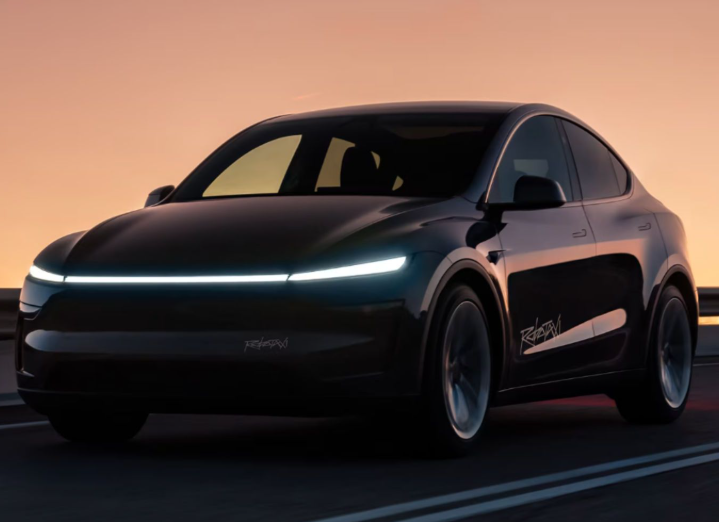Tesla Unveils Its Robotaxis:Tesla has officially launched its robotaxis, but they’re still far from full autonomy. While Tesla grabs headlines with its bold vision, Waymo quietly leads the real-world autonomous race with 250,000 fully driverless rides per week. Amazon’s Zoox is also making fast progress in the background. This article dives into the current state of the autonomous driving war, comparing Tesla, Waymo, and Zoox as they race toward the self-driving future.
Tesla Unveils Its Robotaxis: The Autonomous Race Heats Up
The race toward fully autonomous driving is heating up, with major players like Tesla, Waymo, and Zoox taking different approaches as they battle for dominance in this transformative sector. Recent developments have once again put Tesla in the spotlight, as it officially launched its highly anticipated robotaxis.
However, while Tesla’s robotaxis are now technically “live,” they remain in a very limited demo phase. Currently, they operate only during the day, in favorable weather conditions, and within restricted areas. Crucially, they still require a human monitor sitting in the passenger seat — signaling that full autonomy remains a future goal rather than a present reality.
Despite these limitations, Tesla’s stock surged on the back of the launch, fueled by investor enthusiasm and the immense promise of what this could eventually become. Investors are reacting more to the potential scalability of Tesla’s approach rather than its current capabilities. Tesla bulls argue that Elon Musk has already built the critical foundation for rapid scaling, thanks to millions of Teslas already on the road equipped with the necessary hardware for autonomy.
The idea is that once the software is perfected, Tesla can simply “flip a switch” and activate full autonomy across its vast existing fleet — a unique advantage compared to competitors who must build fleets from scratch. Yet, the key question remains: does the software actually work well enough for full autonomy? This weekend’s cautious launch suggests there is still considerable work to be done.
In contrast, Waymo — widely regarded as the current leader in real-world autonomous driving — is far ahead in terms of actual performance and scale. Valued at $45 billion, Waymo operates within Alphabet (Google’s parent company), where investor focus is often centered on AI’s impact on search, leaving Waymo somewhat underappreciated.
Yet, Waymo is already providing over 250,000 fully driverless rides every week across multiple cities. Its cars operate without any human in the driver’s seat, making it the first real large-scale autonomous service available to the public. Morgan Stanley’s analysis notes that Waymo currently operates the largest autonomous fleet in the U.S., and it is on track to serve five markets by the end of 2025, with projections estimating expansion to 30 cities and nearly 18,000 vehicles by 2030.
Meanwhile, Amazon-backed Zoox is quietly emerging as a credible challenger. Though it is still in testing, Zoox has Amazon’s vast financial backing and is building a unique, fully autonomous vehicle designed specifically for robotaxi service — unlike Tesla, which retrofits existing passenger vehicles. Zoox’s long-term roadmap projects operations in 16 cities with a fleet of about 8,400 vehicles by 2030. Though it currently lags behind Waymo in deployment, Zoox’s deep resources and innovative design make it a serious contender in the years ahead.
When comparing the three, the differences in strategy become clear. Tesla’s vision hinges on its hardware scale advantage and eventual software breakthroughs. Waymo is already demonstrating operational scale and transparency, providing detailed safety data, human intervention rates, and miles driven. Regulators and public trust are heavily influenced by this openness.
Tesla, on the other hand, still faces questions around its safety record and transparency, especially as lawmakers in Texas and other states push for greater disclosure on autonomous testing outcomes.
Zoox offers a third model: designing a purpose-built autonomous vehicle from scratch, backed by Amazon’s logistical expertise and financial might. While it may not yet have the visibility or scale of Waymo, its potential for rapid catch-up is real.
Deirdre Bosa, described a personal experience that reflects the evolving landscape. Driving her Tesla equipped with Full Self-Driving (FSD) beta software, she found herself behind a Waymo vehicle. She noted that the Waymo has become increasingly assertive, more human-like in its lane changes and speed adjustments — a sign of how quickly the technology is maturing.
Ultimately, Tesla’s 10% stock surge reflects investor confidence in its long-term vision rather than its current capabilities. If Tesla can achieve software breakthroughs to match Waymo’s performance, it could theoretically scale faster than any competitor, thanks to its vast installed base of vehicles. However, in the short term, Waymo remains the undisputed leader in real-world fully autonomous operations, with Zoox quietly building momentum in the background. The next few years will be crucial in determining which company — or companies — will define the autonomous future.

